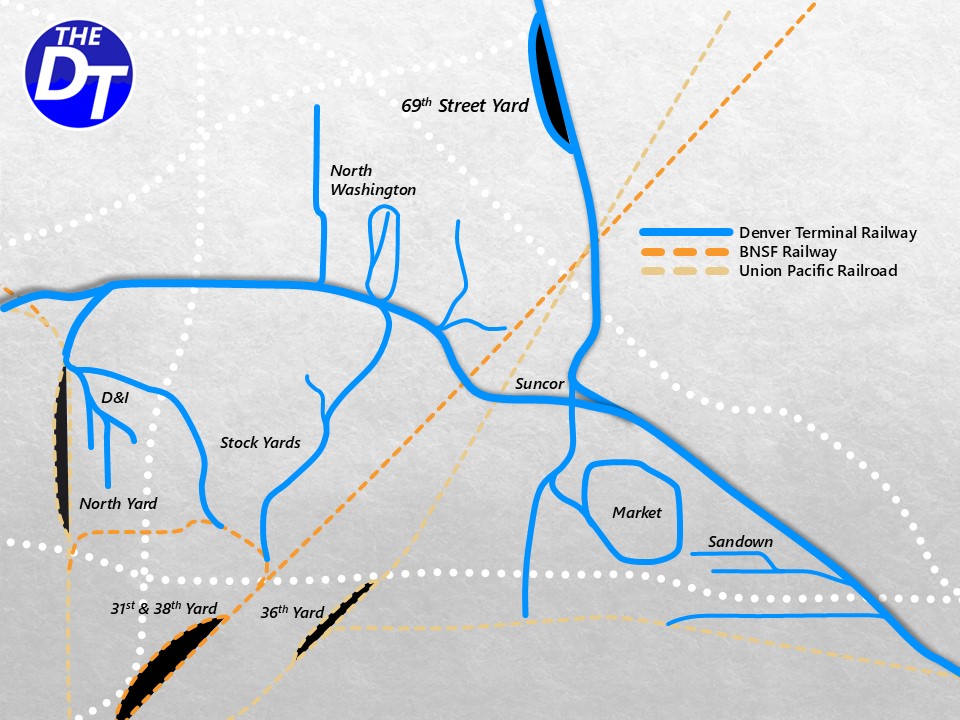
Denver Terminal
The Denver area, which lends its name to the railroad, encompasses key industrial zones such as D&I, Stock Yards, North Washington, Suncor, Marked, and Sandown, spanning both Denver and Adams County. The 69th Street Yard in Commerce City serves as the central hub for all switching operations in these areas. On a typical day, 5-6 local trains depart from the yard to provide service across the Denver region.
Much of the Denver area is operated by the Denver Rock Island Railroad. Other areas such as the D&I and Market are still operated by the BNSF Railway.
https://denverrockisland.com/
Boulder Branch
Much like the Tennessee Pass line, the Denver Terminal Railway took over operations on the line to Boulder after Union Pacific ceased its activities. Initially, the focus was on the southern portion of the line through Commerce City, where the railway developed a brand-new yard at 69th Street to support extensive switching operations in Denver and Adams County. However, the acquisition included the entire line to Boulder, prompting the Denver Terminal Railway to rehabilitate the tracks to attract new customers in the Boulder area and along the northern I-25 corridor. Additionally, the Denver Terminal Railway facilitates commuter rail traffic on this line, connecting Denver and Boulder.
The Union Pacific constructed the Dent Branch to Boulder in 1911 to directly block the Denver, Laramie and Northwestern Railroad from being able to reach Fort Collins. The line was eventually sold off but mostly remains intact to this day. A portion of the line between 72nd Street and 124th Street now operates as a commuter rail line.
https://coloradorailfan.com/gallery/gallery-classic.asp?loc=Dent%20Branch&sub=Yard
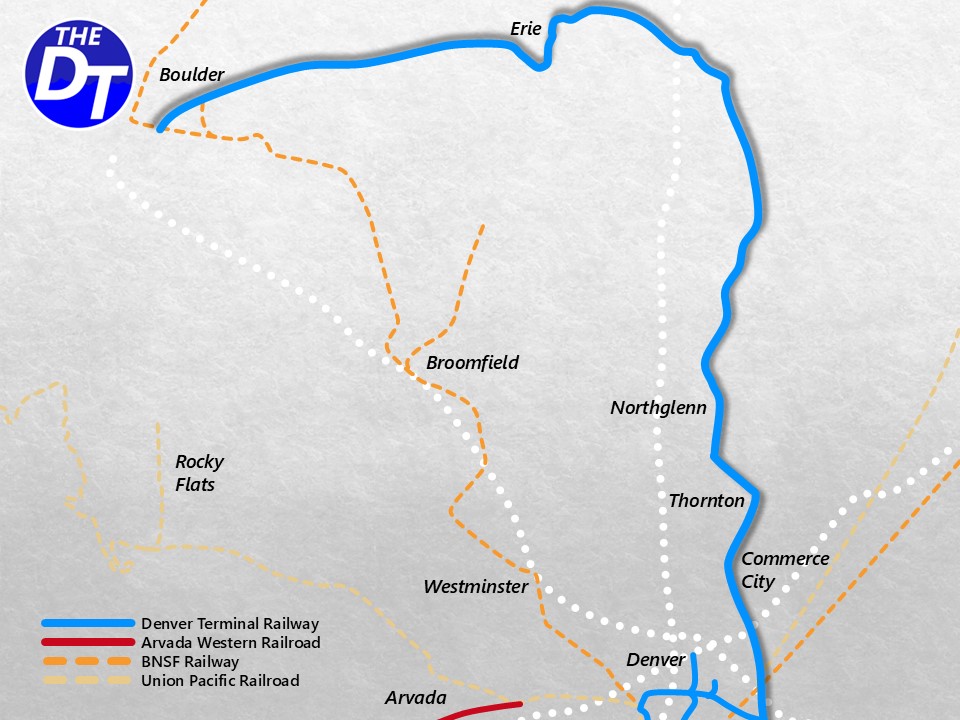
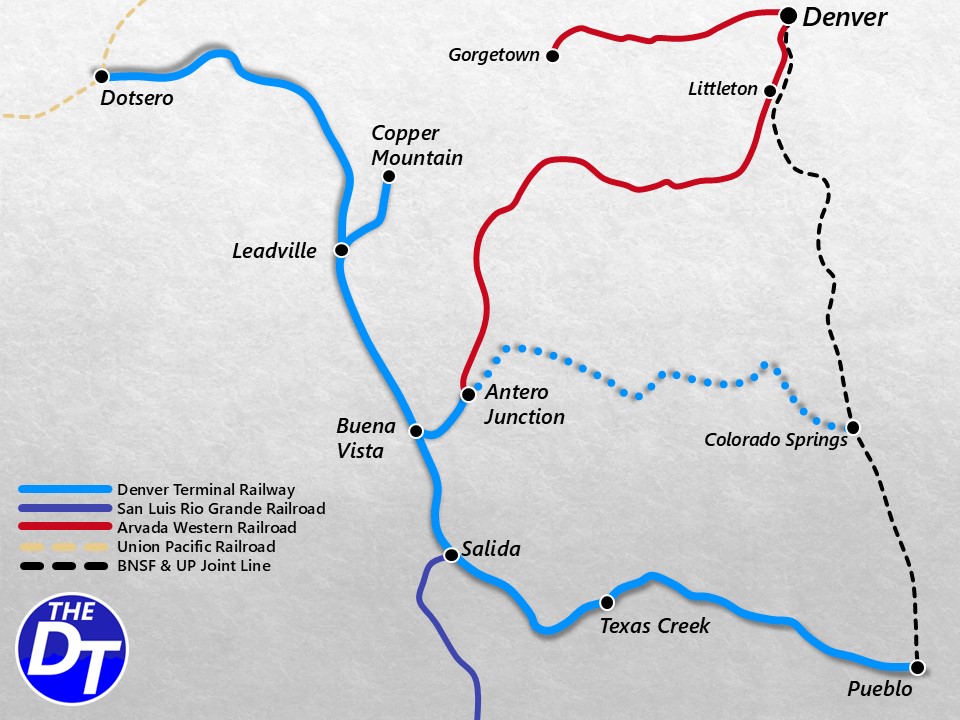
Tennessee Pass
The Tennessee Pass line was originally built by the Denver & Rio Grande Western Railroad in the 1890s. Over the years, it passed into the hands of the Southern Pacific and later the Union Pacific, which ceased operations on the line in 1997. Eventually, the entire route, including the original Colorado & Southern line to Copper Mountain and the right-of-way of the Colorado Midland Railroad, was acquired by The Denver Terminal Railway. Comprehensive rehabilitation work followed, including restoring a section of the Colorado Midland Railroad to establish a connection with the Arvada Western Railroad at Antero Junction. With these upgrades, the line now provides critical north-south connectivity between the Arvada Western Railroad and the San Luis Rio Grande Railroad, while also reopening vital east-west rail connections across the state.
Tennessee Pass remains dormant under Union Pacific’s ownership, largely unchanged since the last revenue train traversed the line in 1997. While there have been recent efforts to revive the line, they have yet to succeed, leaving its future uncertain.
https://www.american-rails.com/tennessee.html
A portion of the line between Leadville towards Copper Mountain still operates as the Leadville, Colorado & Southern Railroad.
https://leadvillerailroad.com/
Zia Railway
The Zia Railway is the only line operated by The Denver Terminal Railway in New Mexico. Originally established as the Santa Fe Northwestern Railway, the line was built to transport coal, copper, timber, and sulfur from the western slopes of the Jemez Mountains. Despite its initial purpose, the railway struggled financially, with timber and coal traffic ceasing in the early 2000s. However, a surge in copper prices helped delay abandonment for several years. Eventually, The Denver Terminal Railway assumed operations and undertook a full rehabilitation of the line. The railway’s fortunes improved further with the development of new fracking oil wells along the route, providing fresh traffic alongside existing copper and sulfur shipments.
The Santa Fe Northwestern Railway, incorporated in the 1920s, was a proposed line intended to branch off the ATSF mainline at Bernalillo. The planned route would have extended to San Ysidro, passing through Santa Ana and Zia Pueblo, before splitting toward La Ventana and the Jemez Mountains.
https://npshistory.com/publications/usfs/region/3/santa-fe/cultres9/sec1.htm
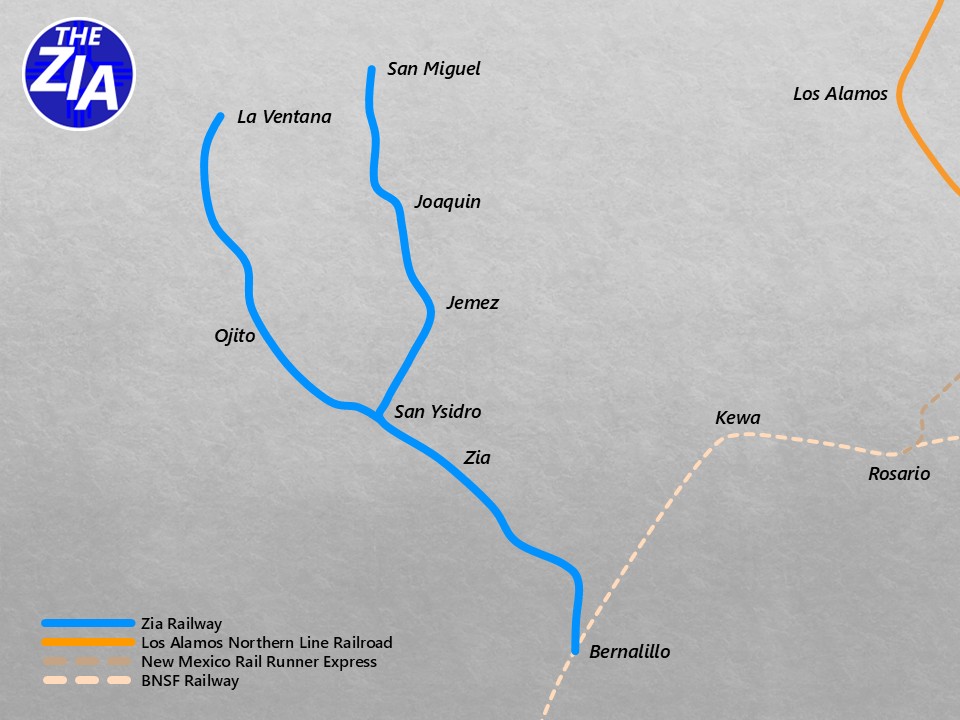
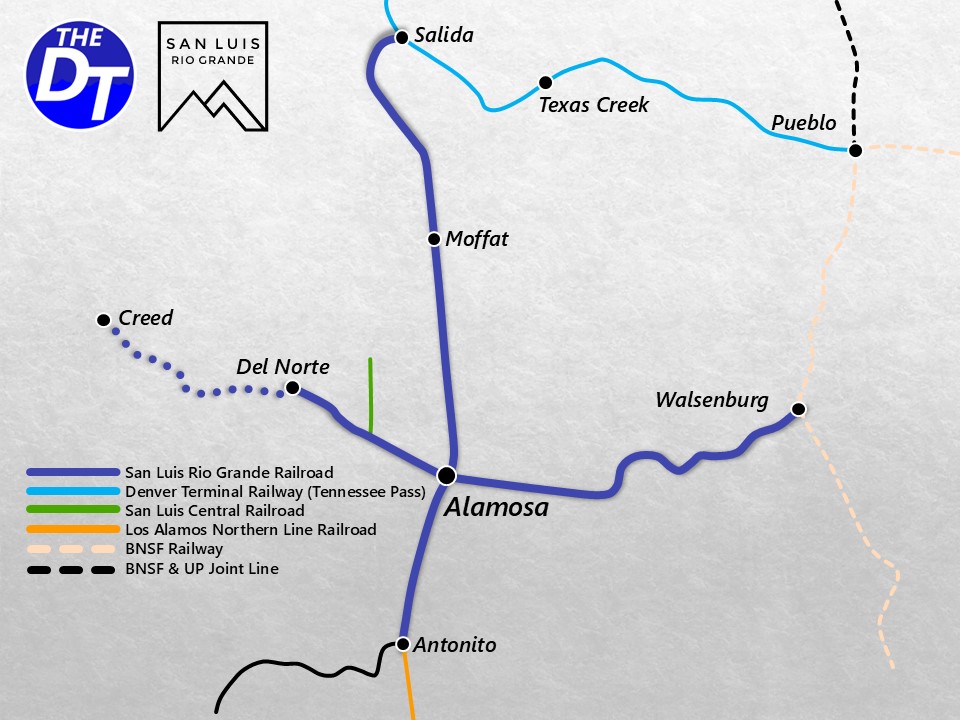
San Luis Rio Grande
Originally envisioned as part of the Denver & Rio Grande’s ambitious plan to connect Denver with Mexico City, the rail lines through the San Luis Valley were initially constructed as narrow gauge before being converted to standard gauge. Over the years, through a series of consolidations and mergers, these lines became part of the Union Pacific Railroad. In 2005, they were sold to Iowa Pacific Holdings. Following a period of financial hardship, the San Luis & Rio Grande Railroad was acquired by The Denver Terminal Railway after it entered bankruptcy. Despite being owned by The Denver Terminal Railway, the operation and maintenance of the railroad were entrusted to Sur Rail Transportation.
After the Iowa Pacific Holdings bankruptcy, the railroad was purchased by the Soloviev Group and the railroad was renamed the Colorado Pacific Rio Grande Railroad.
https://cxrgrr.com/
